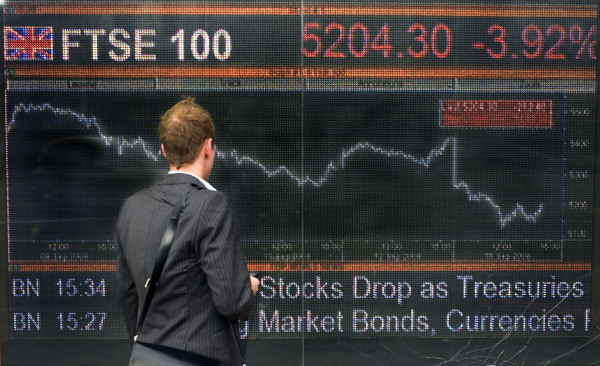

It’s no surprise that dividend ETFs have gained popularity during the past few years. In the current landscape of rock-bottom interest rates, coupled with an increasing number of retiring baby boomers, many income-seeking investors have looked to dividend ETFs to compensate for the low yields bonds offer.
These strategies remain the most popular segment of the smart-beta ETF market. At the end of August 2016, there were 48 dividend-oriented ETFs domiciled in Europe, collectively amounting to £14.5bn in assets.
But not all dividend strategies are created equal and their differences impact the risk and return profile of the overall portfolio.
Broadly speaking, dividend strategies sit along a continuum, with those that emphasise high-dividend income on one end and those that prioritise dividend growth on the other. In general, the strategies reflect a trade-off between current yield and potential dividend growth.
Income-oriented strategies, also referred to as yield chasers, tend to select constituents exclusively on the basis of high current and/or prospective payouts. They are fairly agnostic to dividend sustainability.
But simply buying the highest-yielding stocks bears considerable risk. These companies tend to pay out a dangerously high share of their earnings and may not be able to maintain their dividend payments. Stock prices typically decline ahead of, and with, these dividend cuts.
In contrast, dividend-growth strategies tend to favour firms with sustainable competitive advantages, extensive dividend growth histories and solid profitability. On the whole, they typically offer lower yields in exchange for safer payouts.
While dividend growers are more likely to generate stable income streams and grow capital over time, that does not necessarily mean they are less risky investments than higher-yielding stocks. Companies that consistently increase dividends throughout market cycles face more demanding expectations to increase their earnings.
There is a third group of ETFs that falls somewhere in the middle of the dividend income/dividend growth spectrum, attempting to find a balance between the two. In order to limit risk, these strategies apply fundamental analysis or quantitative filters to screen out distressed firms. One caveat is that sustainability filters are often backward-looking. There is no guarantee these companies will pay dividends in the future.
Generally speaking, the flagship family of S&P Dividend Aristocrats indices lean more toward dividend growth, while the FTSE Dividend indices skew more toward income. Meanwhile, the STOXX Select Dividend indices exhibit characteristics of both.
The top five dividend ETFs in Europe by assets, excluding property funds and MLPs. | |||
ETF Name | Benchmark | Fund Size (£) | Dividend Strategy |
SPDR® S&P US Dividend Aristocrats | S&P High Yield Dividend Aristocrats | 1,999,440,384 | Growth |
iShares STOXX Global Select Dividend 100 (DE) | STOXX Global Select Dividend 100 | 867,422,246 | Growth/Income |
SPDR® S&P Euro Dividend Aristocrats | S&P Euro High Yield Dividend Aristocrats | 825,018,278 | Growth |
iShares UK Dividend | FTSE UK Dividend Plus | 778,283,124 | Income |
iShares EURO Dividend | EURO STOXX Select Dividend 30 | 538,458,325 | Growth/Income |
Source: Morningstar Direct – data as of 18/09/2016 | |||
Under the umbrella of dividend-focused ETFs, the Dividend Aristocrats funds are amongst the largest in Europe. The popularity of these products can be attributed to their relative security of income.
There is one main requirement for a company to be included in an Aristocrats index: it must have maintained or increased dividends for many consecutive years: 10 for the European indices and 20 for the US index. If a company misses a dividend payment or produces negative earnings growth, it will be removed. The approach is elegant and simple.
The screening criteria for other well-known dividend-focused benchmarks are less stringent. For example, FTSE dividend indices screen for the highest yielding stocks within their respective regional universes, such as the FTSE 350 for the UK and the FTSE All-World for the world. The securities are then weighted either by their 12-month forward dividend yield or by market cap, depending on the index.
Meanwhile, STOXX dividend indices, which also screen for the highest yielding stocks, apply dividend sustainability criteria. Generally, they only select companies with positive dividend growth rates over the past five years, as well as non-negative payout ratios.
These nuances in index methodologies can directly impact the yields these funds offer, as well as their risk and performance measures. For example, the 12-month dividend yield for the SPDR S&P UK Dividend Aristocrats ETF is 4.17 per cent compared with 5.94 per cent for the iShares UK Dividend ETF.
Over the trailing five years, the S&P UK Dividend Aristocrats has been less volatile, as evidenced by its lower standard deviation of 9.99 per cent, compared with 11.03 per cent for the FTSE UK Dividend Plus. But in terms of performance, both indices have fared similarly. Over the same period, the S&P index has beaten the FTSE by only 0.03 per cent on an annualised basis.
The top five dividend ETFs in Europe by 12-month yield, excluding property funds and MLPs. | ||
ETF Name | Benchmark | 12 Month Yield |
Deka DAXplus® Maximum Dividend | DAXplus Maximum Dividend PR EUR | 7.17 |
iShares UK Dividend | FTSE UK Dividend Plus NR GBP | 5.94 |
Lyxor Stoxx Europe Select Dividend 30 | STOXX Europe Select Dividend 30 NR EUR | 5.82 |
iShares EURO Dividend | EURO STOXX Select Dividend 30 NR EUR | 5.46 |
iShares EURO STOXX Select Dividend 30 (DE) | EURO STOXX Select Dividend 30 NR EUR | 5.19 |
As the menu of dividend ETFs expands, new products that look to pair high dividend yields with low volatility have come into favour. This approach has proved hugely successful for PowerShares, which has gathered nearly half a billion sterling in its Ireland-domiciled S&P 500 High Dividend Low Volatility ETF since the fund’s inception in mid-2015.
With the proliferation of dividend-oriented ETFs and their increasing complexity, understanding the nitty-gritty idiosyncrasies of the underlying indices becomes more important. The devil is often in the detail and the detail is not always easy to analyse.
To keep things simple, the most important question investors need to ask is whether they want to choose a fund which emphasises current yield or future dividend growth. That is a good place to start.
Monika Dutt is passive strategies research analyst at Morningstar



